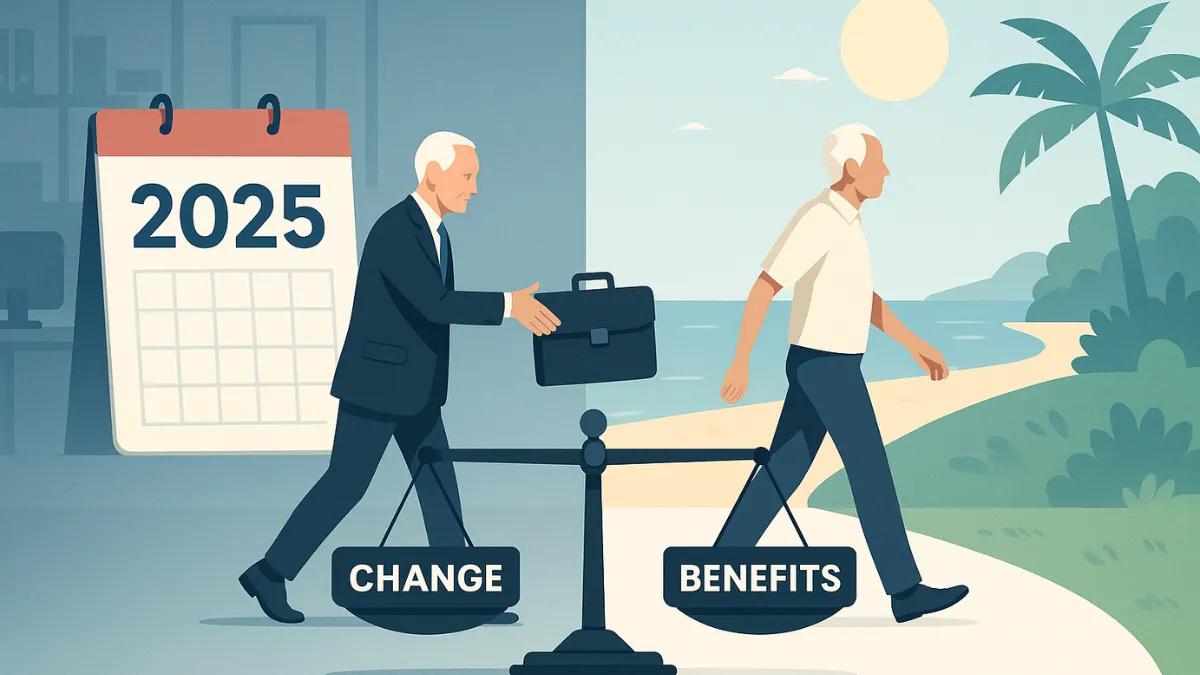Planning for retirement in the U.S. just became more complicated but also more important. Starting in 2025, there will be key changes to the Social Security system, and if you’re nearing retirement age, you’ll want to pay attention.
From changes to Full Retirement Age (FRA) to Cost-of-Living Adjustments (COLA) and penalties for early retirement, things are shifting fast. Let’s break it down simply so you can make smarter retirement plans.
FRA (Full Retirement Age)
If you were born in 1959, your FRA in 2025 is now 66 years and 10 months. This is almost a year later than what it used to be for many people. Over time, FRA will gradually increase to 67 for those born in 1960 or later.
FRA is the age when you can start receiving Social Security benefits without any penalties. If you retire before your FRA, your benefits will be reduced. If you retire after, you’ll earn a bonus.
Early Retirement
You can still retire at 62, but you’ll face a permanent reduction of 29.17% in benefits. For example, if your full benefit at FRA is $2,000 per month, retiring at 62 would drop it to about $1,417.
Some people may still choose early retirement, such as those with health issues, shorter life expectancy, or urgent financial needs. But it’s not a decision to take lightly.
Delaying Retirement
If you can wait past your FRA to claim Social Security, your benefits will grow by 8% each year until you turn 70. For example, if your monthly benefit at FRA is $2,000, waiting until 70 could increase it to around $2,640. That’s a 32% increase!
This option is great for healthy individuals with other income sources who want to maximize their Social Security checks or ensure higher benefits for a spouse later on.
COLA (Cost-of-Living Adjustment)
In 2025, the COLA increase is expected to be 2.5%. While this is lower than 2024’s 3.2%, it still means the average Social Security check will increase by about $49 per month.
Earnings
If you plan to work while receiving Social Security, you can earn up to $23,400 in 2025 if you’re under FRA. If you exceed this limit, the Social Security Administration (SSA) will deduct $1 for every $2 you earn above the limit.
The good news is, once you reach FRA, the earnings limit goes away, and any deductions are recalculated into your future benefits.
Planning
With the FRA increasing and COLA adjustments changing each year, it’s clear that relying solely on Social Security may not be enough for a comfortable retirement.
Here’s a checklist to keep your retirement planning on track:
Use the SSA Estimator: Get an estimate of your benefits at 62, FRA, and 70.
Consider Your Health and Longevity: These factors will help you decide when to claim benefits.
Build Multiple Income Streams: Invest in a 401(k), Roth IRA, or real estate.
Talk to a Professional: A financial advisor can help customize your plan and avoid costly mistakes.
The changes in 2025 are more than just technical updates—they directly affect how much money you’ll have when you retire.
Whether you’re nearing retirement or still years away, understanding these rules will help you make smart, confident decisions.
FAQs
What is the FRA for those born in 1959 in 2025?
It’s 66 years and 10 months.
What is the penalty for early retirement?
It’s a permanent 29.17% reduction in benefits.
What is the COLA increase for 2025?
It’s a 2.5% increase, or about $49 more per month.
Can I work while receiving Social Security?
Yes, but there’s a $23,400 earnings limit before FRA.
Is delaying retirement worth it?
Yes, your benefits grow 8% every year until you turn 70.

